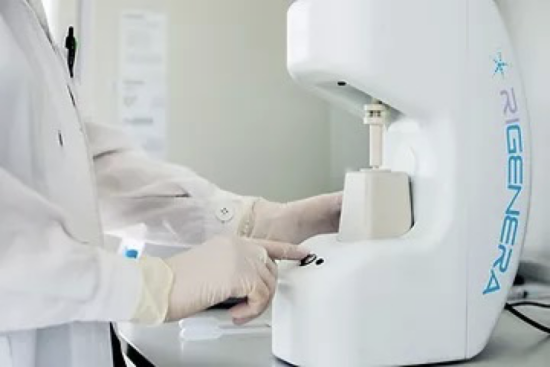
© All rights reserved BHR Clinic - Developed by Eugene Informatique
Body hair FUE (BHFUE) can present a very positive opportunity for restoring hair when the option of scalp hair transplantation is not available due to donor limitations.
Body hair transplant uses the same principles of extraction as FUE, however, hair is extracted from the body instead of the scalp. The procedure is recommended when there is insufficient scalp donor hair. The doctor who performs BHFUE must already be able to competently perform FUE surgery before performing body hair FUE. Body hair FUE is a relatively new form of hair replacement.
Due to genetic variants, hair characteristics and growth rate, body hair will behave differently than scalp hair and depending on its source, may yield a slower and lower growth rate. Compatibility is also an important consideration. Beard hair presents a very reliable donor source with impressive growth.
Studies show that body hair such as chest hair has a very short anagen phase and a very long telogen phase. As such, body hair needs a period of about six months to grow 1-2 inches. Then it may remain at a similar length for several years.
In addition, the colour and curl of body hair has to match the scalp hair to a satisfactory degree. Colour is less of a limitation but the curl can sometimes differ so we need to have an acceptable level of curl compatibility before recommending Body hair FUE.
Depending on the specific case, BHR may advise a chest body hair test involving a smaller graft count. If this is the case, over a period of 6 months or longer, the results will determine whether to proceed to a larger chest hair session.
REPAIR PROCEDURES
Repair surgery can now achieve very impressive results for those who may have suffered from previous poor quality surgery. However, repair procedures can be medically difficult to perform and complication can arise that don’t exist with a virgin scalp. Patients expectations must be managed and realistic and due to the nature of being a “repair patient”, the emotional impact can be significant and should be appropriately supported.
It is important to understand that not all damage caused by previous procedures can be repaired. It may also take multiple surgeries to achieve desired results.
As such, when assessing a repair, it is vital to focus on areas of greatest concern. An honest and open dialogue between the doctor and the patient helps in setting clear goals and making the patient aware of any limitations.
Often it will be necessary to remove old grafts and redesign the hairline. This can be achieved with an FUE punch, but if the grafts are too big or placed close together a punch may not be possible and the area will need sutures.
Poorly placed or angled grafts can cause “pitting” at the graft or “ridges” around the graft. Pitting can be repaired after the graft is removed, and over time the skin should return to normal, but this can depend on the size of the graft and how difficult the removal is.
Ridging, or cobblestoning, is less forgiving. Both pitting and ridging impair the placement of new grafts and can cause a lower yield than expected from a virgin scalp due to scarring.
The condition of a patients donor area is vital in repair operations and will greatly influence results.
Donor area compromise may be due to over-harvesting with a large punch in an FUE procedure, incorrect positioning of the strip scar, or scar stretching.
When dealing with an old strip scar there are two options: englobing the scar if the goal is to remove more grafts, revising the scar, or adding grafts to the scar to camouflage it. Englobing or revising does not guarantee a thinner scar than before.
Until the incision is made it is impossible to know the depth of fibrosis beneath the skin or determine how the new scar will heal. The scar will not necessarily be smaller and it won’t be invisible. Adding grafts into the scar can be a good option depending on the size of the scar and how well it has healed.
The yield may well be lower when placing into a scar line, so it may be prudent to place a lower density initially and to then measure the yield before considering further grafts.
FOLLICULAR UNIT EXCISION
TRADITIONAL METHOD
BODY HAIR TRANSPLANT (BHFUE)
PLATELET-RICH PLASMA
© All rights reserved BHR Clinic - Developed by Eugene Informatique